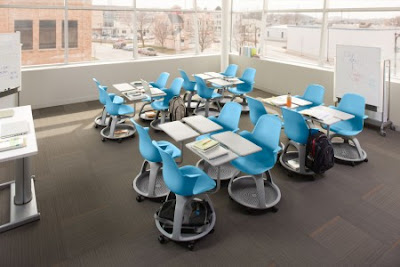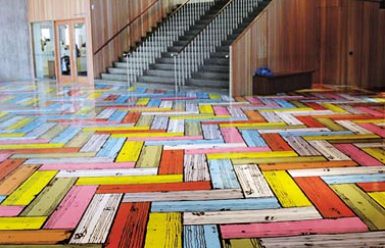Although wood has the ability to withstand the physical wear and tear that a typical lab is routinely subjected to, it naturally omits acids and other pollutants, with oak (most often used) being the worst offender. The porous nature of wood allows it to easily absorb odor and contamination, as well as potentially harbor mold and other bacteria, all of which can be detrimental to sensitive test results. The density and hardness of plastic laminate means that it omits very little chemical gasses, and as long as it is glued to an NAUF substrate, offgasing of this material should also be of little concern.
Wilsonart’s Chemsurf and Formica’s ChemTop2
lines are an affordable alternative to wood cabinetry, wainscoting, and in some
settings, are even suitable for use as counter tops. Each line carries a large
variety of colors and patterns, making them great choices for lab areas that
need to make a big statement. If the customer desires the look of wood with the
functionality of laminate, they also come in a wide range of realistic wood
grains. Each product's ability to resist harsh chemicals, stains, and mild
abrasion make them a durable, long-lasting option for intermediate-type labs in
hospitals, schools, and factories.
Over time, as wood surfaces are exposed to strong chemicals, excessive cleaning, and in some instances heat, they tend to lose their protective finish--leaving them susceptible to corrosion and staining. However, in rigorous product testing, both Wilsonart and Formica's chemical resistant laminates held up beautifully, with only a slight change in color or gloss when exposed to bright light and certain chemicals over prolonged periods of time.
While wooden casework needs routine cleaning and polishing to maintain its durability, with chemical resistant plastic laminate you simply wipe the surface clean--no scrubbing or harsh cleaning agents are required--offering years of superior performance that is unmatched by its competitor.
sources: one . two . three . four




























